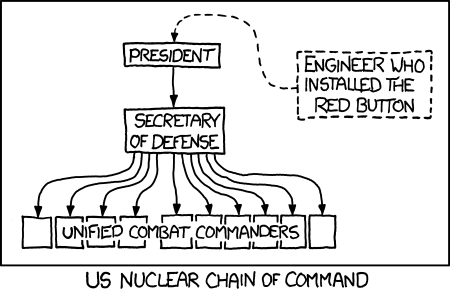
All the world’s a stage, And all the men and women merely players; They have their exits and their entrances, And one man in his time plays many parts
As You Like It, Act II, Scene VII. William Shakespeare
I’ve been thinking about the role of mental models for sense-making. While we do this all the time, I think there is significant incremental value in making those models more explicit and then playing with them to tease out their implications. Organization as machine is a familiar example, one that I believe is largely obsolete. Organization as ecosystem or complex adaptive system has grown in popularity. It has the advantage of being richer and more sensitive to the complexities of modern organizations and their environments. On the other hand, that mental model is a bit too appealing to to academic and consulting desires to sound simultaneously profound and unintelligible. It fails to provide useful guidance through the day-to-day challenges of competing and surviving.
Organization as performance art or theatrical production offers a middle ground between simplistic and over-engineered. It appeals to me personally given a long history staging and producing. It’s my hypothesis that most of us have enough nodding familiarity with the theater to take advantage of the metaphor and model without so much knowledge as to let the little details interfere with the deeper value.
The goal of theater is to produce an experience for an audience. That experience must always be grounded in the practical art of the possible. This gives us something to work with.
Let’s work backwards from the performance. We have the players on the stage and an audience with expectations about what they are about to experience. If that is all we have, then we are in the realm of storytelling. Storytelling demands both the tellers of the tale and the creator of the tale itself. Our playwright starts with an idea and crafts a script to bring that idea to life and connect it to all of the other stories and ideas the audience will bring to the experience. We now have a story, its author, storytellers, and an audience with their expectations.
Theater takes us a step farther and asks us think about production values that contribute to and enhance the experience we hope to create. Stage and sets and lighting and sound can all be drawn into service of the story. Each calls for different expertise to design, create, and execute. We now have multiple experts who must collaborate and we have processes to be managed. Each must contribute to the experience being created. More importantly, those contributions must all be coordinated and integrated into the intended experience.
This feels like a potentially fruitful line of inquiry. It seems to align well with an environment that depends on creativity and innovation as much as or more than simple execution. How deeply should it be developed?
 Last Saturday, Charlotte and I joined the Chicago instance of the
Last Saturday, Charlotte and I joined the Chicago instance of the 


